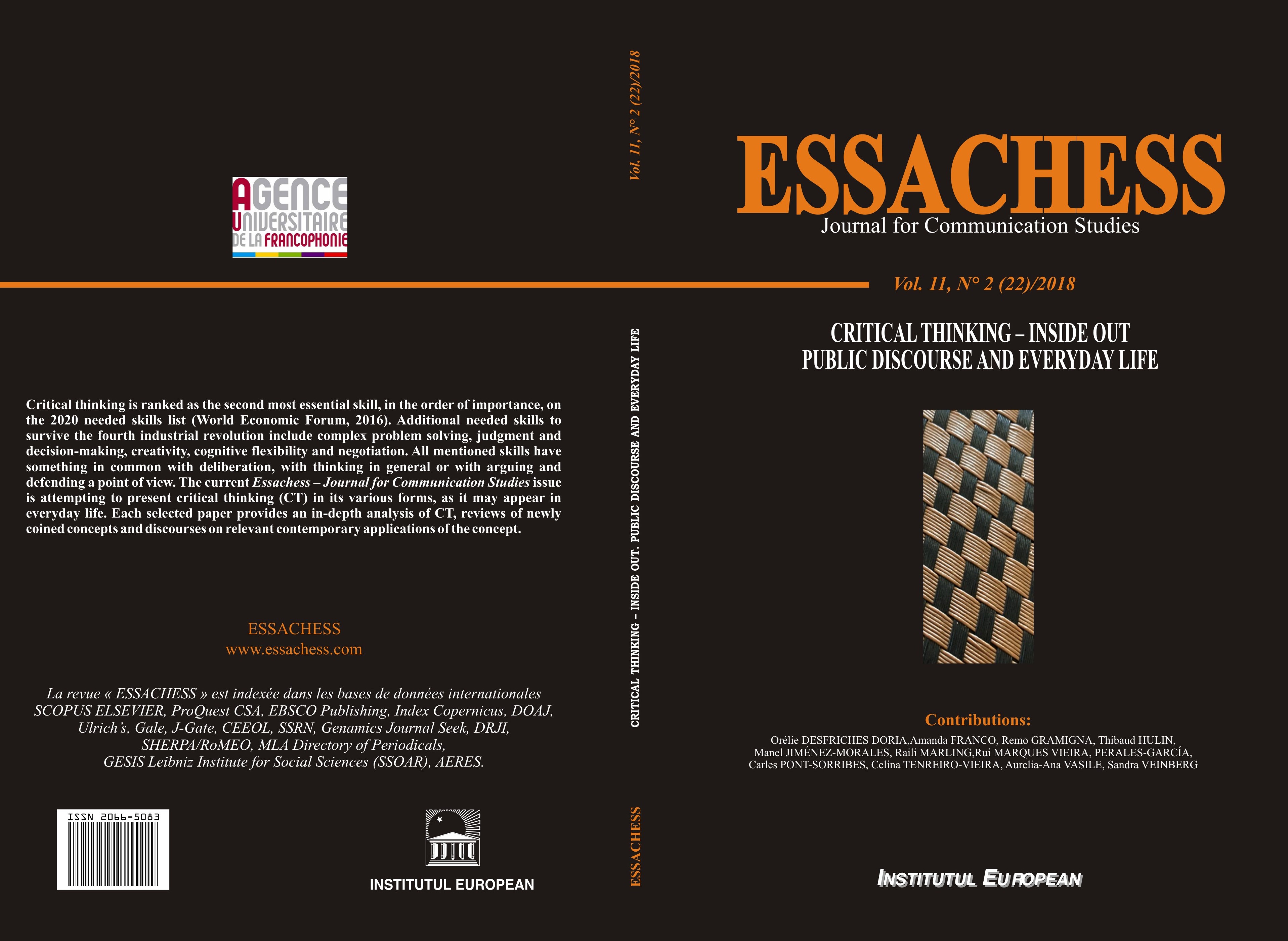How critical thinking
should be at the heart of digital interactions?
How critical thinking
should be at the heart of digital interactions?
Author(s): HULIN ThibaudSubject(s): Anthropology, Philosophy, Social Sciences, Education, Psychology, Semiology, Communication studies, Sociology, Rhetoric
Published by: ESSACHESS
Keywords: critical thinking; pedagogical design; interactions; reflexivity; digital writing;
Summary/Abstract: In this paper, we study how to teach critical thinking at the digital era, in order to promote practitioners autonomy. A theory of interactions is proposed to identify constraints that structure digital creativity. This model helps to design a critical pedagogy, by connecting without opposing a procedural approach to a reflexive one. The paper presents an implementation of this model into a course about writing on a social network. The study of activity diaries of students shows presence of objectivity forms and reflexivity forms, which reflects the development of a critical thinking. This approach offers a way to develop critical thinking not from outside, in a course of argumentation or media analysis, but within the practice itself, in order to become aware of how interfaces structure our expression and thought.
Journal: ESSACHESS - Journal for Communication Studies
- Issue Year: 11/2018
- Issue No: 22 (2)
- Page Range: 85-105
- Page Count: 21
- Language: English

